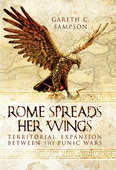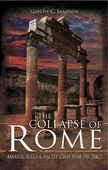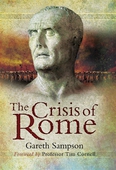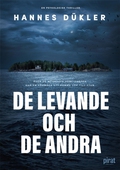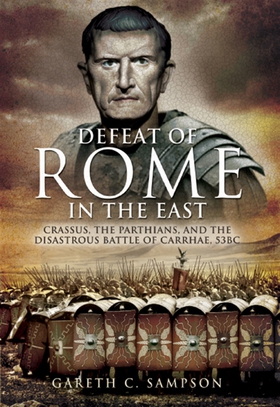
Lägg till önskelistan
Defeat of Rome in the East e-bok
Pris
99 kr
During the last stages of the Republic, Rome suffered its greatest military disaster since Hannibal’s invasion of Italy over 150 years earlier, though this defeat had more far-reaching consequences. While Rome was able to recover from its disaster at Cannae, it never did retrieve the results of Carrhae, a defeat that sealed the East as an impenetrable barrier to Roman ambition, and also signaled the demise of the Republic.
In 53 BC, Marcus Crassus, the richest member of Rome’s ru...
E-Bok
99 kr
Pris
Förlag
Pen and Sword
Utgiven
24 Februari 2021
Längd
224 sidor
Genrer
Historia & Arkeologi, Fackböcker
Språk
English
Format
epub
Kopieringsskydd
Vattenmärkt
ISBN
9781844686346
During the last stages of the Republic, Rome suffered its greatest military disaster since Hannibal’s invasion of Italy over 150 years earlier, though this defeat had more far-reaching consequences. While Rome was able to recover from its disaster at Cannae, it never did retrieve the results of Carrhae, a defeat that sealed the East as an impenetrable barrier to Roman ambition, and also signaled the demise of the Republic.
In 53 BC, Marcus Crassus, the richest member of Rome’s ruling Triumverate, which also included Caesar and Pompey, decided to enhance his military stature with an invasion of the Parthian Empire centered on Mesopotamia (today’s Iraq). His 36,000 legionaries crossed the Euphrates and were met by a much smaller Parthian army, albeit one mounted on horseback in the dispersed, missile-firing steppe-war tradition.
In the desolate territory around Carrhae the Roman legions were surrounded and beset by elusive horse warriors, who alternated deadly arrow-fire from recurved bows with devastating attacks by armored horsemen, wielding lances in the fashion of future European knights. At one point Crassus dispatched his son with the Roman cavalry and light infantry to break a hole through the deadly ring. The Parthians concentrated on the party and destroyed it. Crassus was just about to move with the main body to its aid when Parthian horsemen rode up wielding his son’s head on the tip of a spear.
Severely unnerved, Crassus ordered a retreat, the Parthians moving in to massacre the 4,000 wounded he left behind. The next day, called to a parlay he was forced to attend by his nearly mutinous soldiers, Crassus and his officers were murdered by the Parthians. The now-leaderless Roman army disintegrated, only some 6,000 able to escape. At least 20,000 Roman legionaries were dead on the field, with 10,000 more captured.
In this book Dr. Gareth Sampson, currently a tutor in ancient history at the University of Manchester, lays out not only the gruesome outcome of the battle but its immense consequences. First, unlike Alexander’s Greeks, who had marched all the way to the Indus, Rome was never again to challenge the civilizations beyond the Euphrates. Second, with Crassus dead, Caesar and Pompey engaged in a bloody civil war that would end the Republic and result in political dictatorship.
The author also provides an analysis of the mysterious Parthians, a people who vied with Rome as the most powerful empire on earth. Though their polity and records have long since disappeared, the Parthians’ mark on history is clear enough through their decisive victory over Rome at Carrhae.

